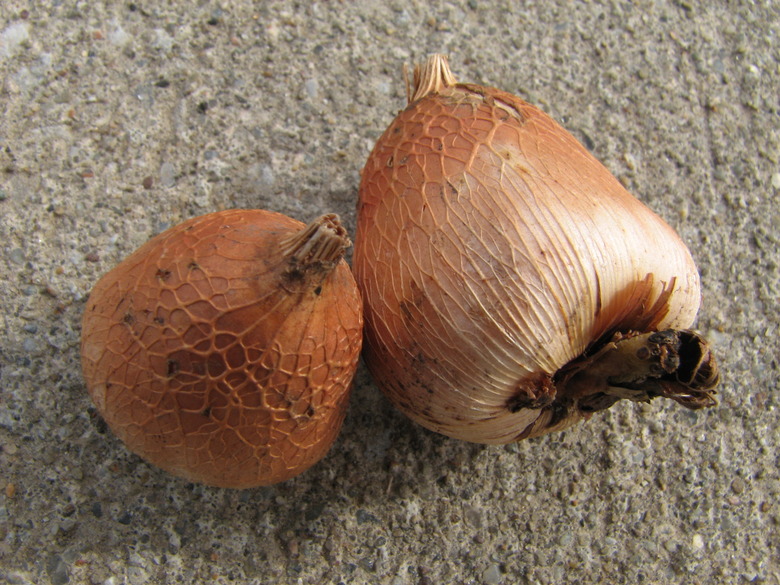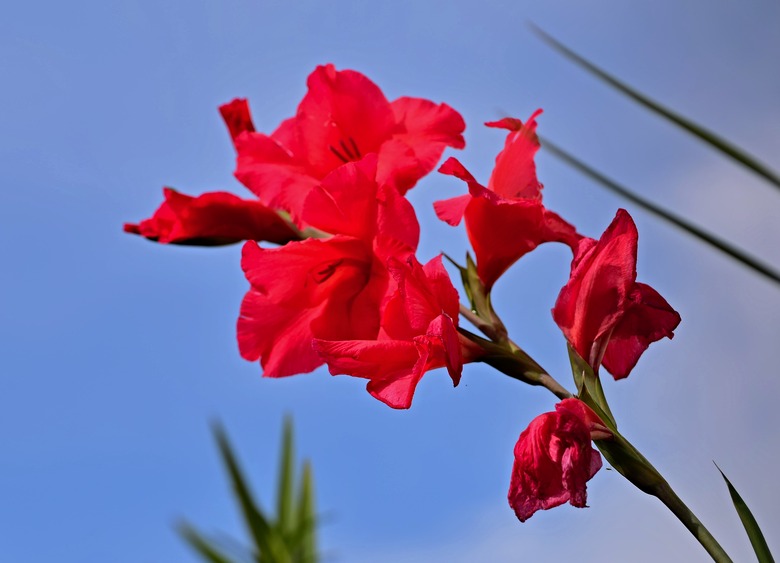How To Plant Gladiolus Bulbs (Corms) In Florida
There are approximately 180 species of gladiolus (Gladiolus spp.), which are flowering plants native to South Africa, the Mediterranean and the Arabian Peninsula. They grow from a fleshy, underground stem known as a corm, which is similar to a bulb, and they make a statement in any flower garden.
Gladiolus plants are winter hardy in USDA plant hardiness zones 7 to 10 and can be grown anywhere in the state of Florida.
Gladiolus Plant Identification
Gladiolus plants are grown for their showy flower spikes, which may have tubular or funnel-shaped flowers. The flowers come in a variety of colors, including white, pink, yellow, red and lavender, to name a few. Often planted in clumps in the landscape, gladioli make a great cut flowers and are often used in bouquets.
All the flowers on the same side of the gladiolus spike, known as a scape, face in the same direction. The size of the flowers varies by cultivar. Grandiflora hybrids produce the largest gladiolus flowers, which may be between 4 and 6 inches wide.
Gladioli are sometimes referred to as sword lilies because of the shape of their leaves. These plants may reach a height of up to 6 feet.
When to Plant Gladioli
In places in Florida where winters are mild and frost-free, gladioli can be planted at any time of the year. July is considered a good time to plant gladioli in Florida regardless of where in the state you are located because of the species's ability to withstand summer heat.
In southern Florida, September is also a good time to plant gladioli. In this part of the state, you should plant gladioli every couple of weeks. This kind of staggered planting ensures a continuous fall bloom. It takes approximately three months for gladiolus corms to bloom after planting.
Planting Gladiolus Bulbs (Corms)
**Gladiolus corms should be planted at a depth of 2 to 3 inches with a distance of 5 to 6 inches between corms.** These plants should be grown in full sun for best results.
Tip
Gladioli should be planted in full sun and moist, well-draining soil.
The soil should not be allowed to dry out, and well-draining soil is a must.
In sandy Florida soils, gladiolus plants can fall over due to the weight of the blooms. Therefore, staking is recommended for support.
Digging Up a Gladiolus Bulb (Corm)
In Florida's warm climate, gladiolus corms can be left in the ground permanently. However, you can also dig up the corms at the end of the growing season to overwinter them indoors and plant them again the following year. For winter storage, keep the corms in a cool location in mesh bags and dust them with fungicide to prevent disease.
Tip
In Florida, gladiolus corms can be left in the ground year round or dug up in the fall and overwintered indoors.
Even if you opt to leave the corms in the ground through the winter, you will need to dig them up every few years to divide the corms, as is the case with most flowering bulbs. Early fall is considered a good time to divide gladiolus plants in Florida. The small bulbs that grow from the main corm, known as cormlets, can be used to propagate new plants.
References
- University of Florida IFAS Extension: Gladiolus
- Missouri Botanical Garden: Gladiolus (group)
- University of Florida IFAS Extension: Bulbs for Florida
- University of Florida IFAS Extension: Planting in September
- University of Florida IFAS Extension: Planting in July
- University of Florida IFAS Extension: Ornamental Corms, Tubers and Rhizomes for Miami-Dade: From gladioli to cannas
- Iowa State University Extension and Outreach: How Do I Overwinter Gladiolus Bulbs?

